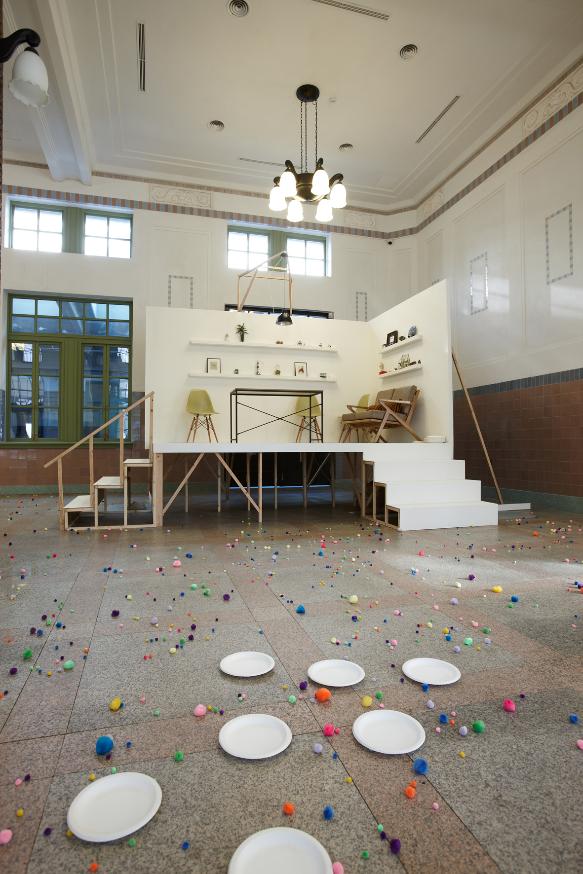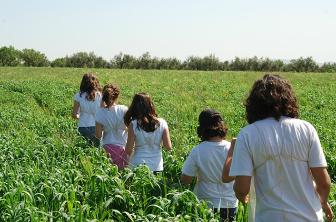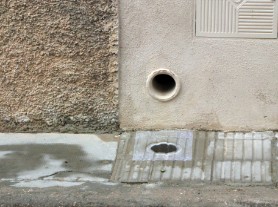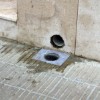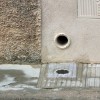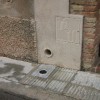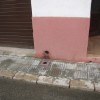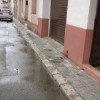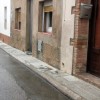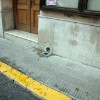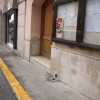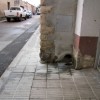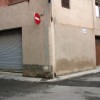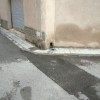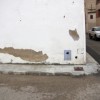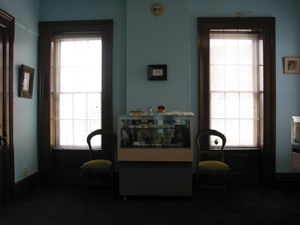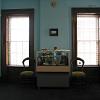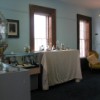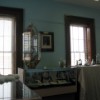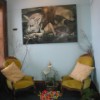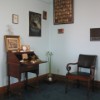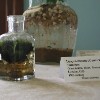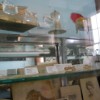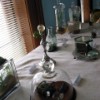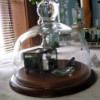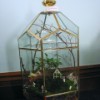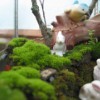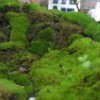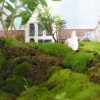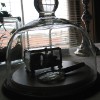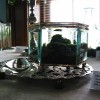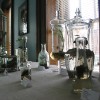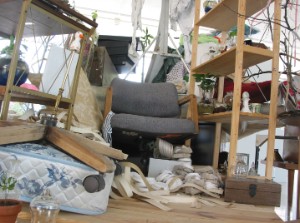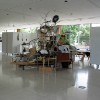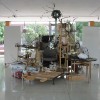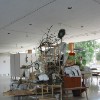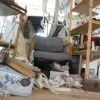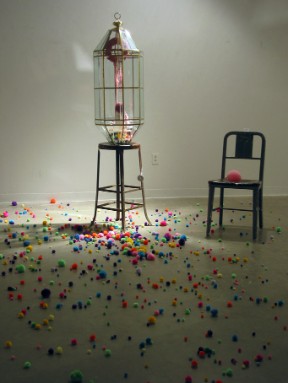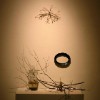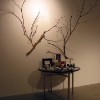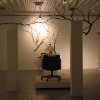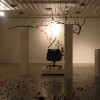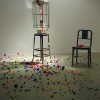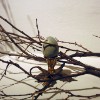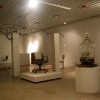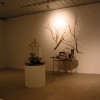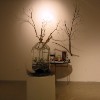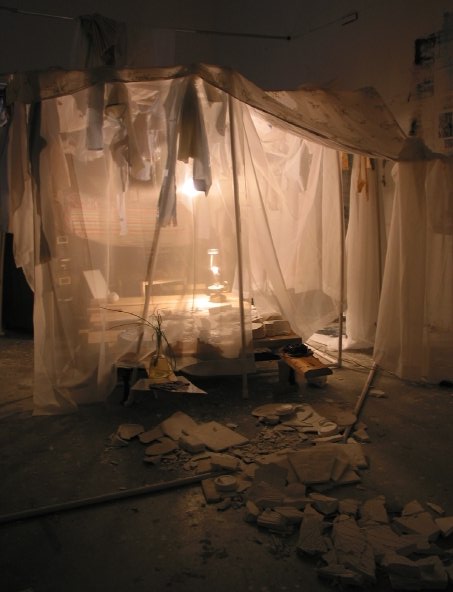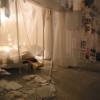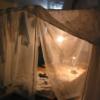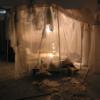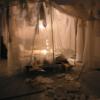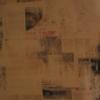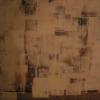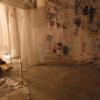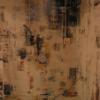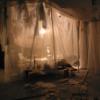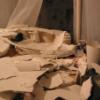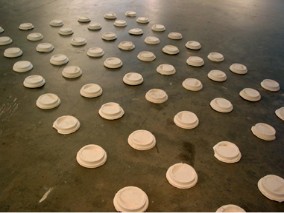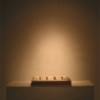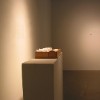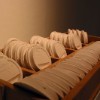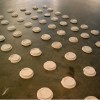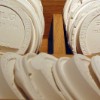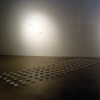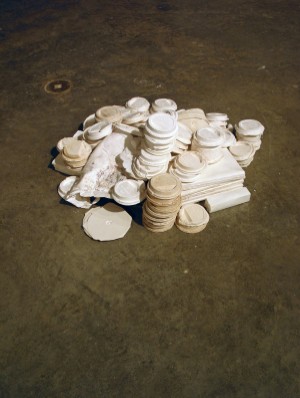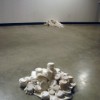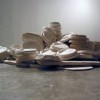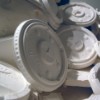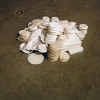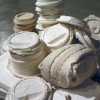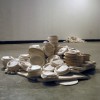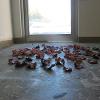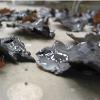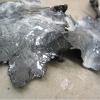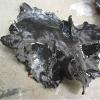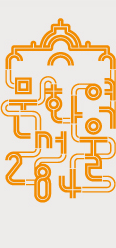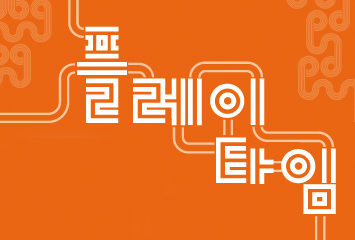MICA Visiting Artist Lecture Series - Fall 2013, Yunjeong Hong
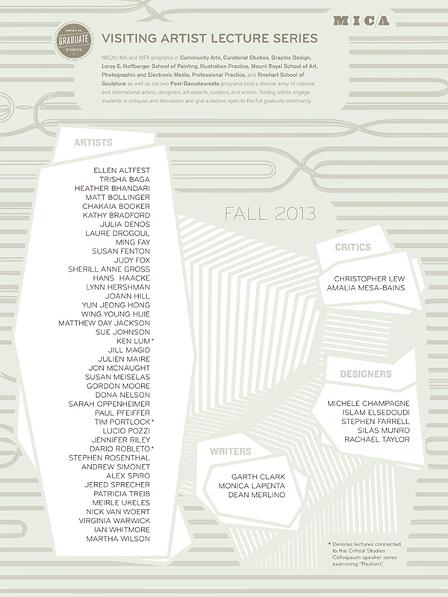
<Time Between Dog and Wolf> 2012 - Yunjeong Hong
Tarot card reading performance
<Oedipus ; sentience scape I> 2012 Yunjeong Hong
Yunjeong hong-directing,Ryujeong hee-movement
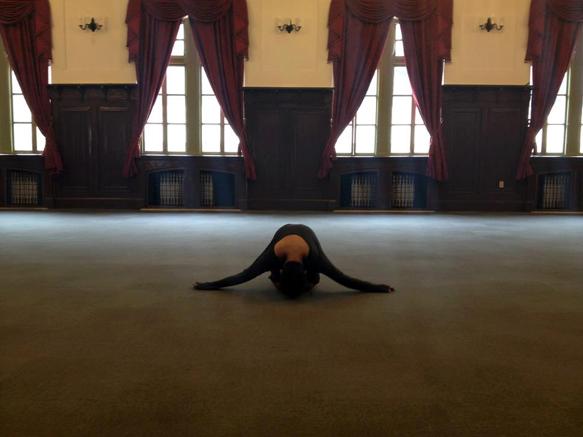
Click to see the entire project of <Oedipus ; sentience scape I> 2012
Nomadic Fantasia- Indra's net Yunjeong Hong
Project Nomadic Fantasia
Indra's net
| |||||||||||||
"...In contrast to the curatorial role, the artist's in Indra's Net suggest a more interesting journey, one of "netting" between the projects. In this framework I consider myself to be the guest or tracker who is invited to the artist's project to add rhythm, noise, or texture. The title, Indra's Net, is after the mythological character Indra of the Buddhist story (the origin of the character came from Hindu), who uses a net as one of his signature tools. The net is considered a symbol of interconnectedness, and at every vertex there is a jewel and the jewels reflect images of each other. In Korean this net is called jae-mang, and people use this word to describe the unlimited and timeless relationship of everything in the world as denoted by the structure of the net and the reflections of the jewels. I chose this title because I wanted to be a "vertex" connecting these artists that have different relationships with history and with myself. I have been watching their projects and am fascinated by their ideas and attitudes, and by how I reflect myself in their works in order to understand my own interest in the work.
-from 'About Curating' Yun Jeong Hong 09/05/2011
Reflection-Reflecta II
Click to see the entire project of
reflection-reflecta II, 2011 Yunjeong Hong
Installation on one of the streets in Llorenc del Penedes, Spain |
Gutter opens a connection between a private and a public space. In this work, I have projected a private space into a public space by mirroring the gutter image. Site-specific/mind-mapping project in CeRCCa |
En prueba del carino que les profesa su hijo, les dedica su foto en prueba del carino que les profesa : Montserrat
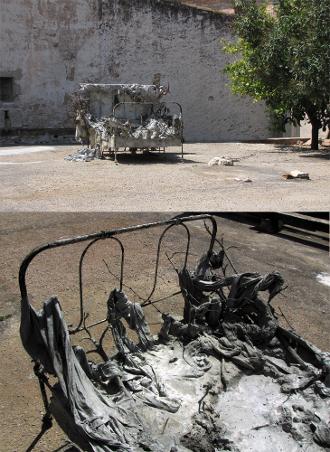
Bed frame, concrete, fabric, book, wood, found object. 2011
By creating a labyrinthical pathway through memorial everyday objects, I want to propose nostalgic moment. Through transforming wool, textiles and domestic objects into a materialized immobile landscape by concrete, memories framed into the structure of a bed aged by time, breathe powerlessly, stuffed and heavy, between life and death.
Center for Research and Creativity Casamarles, Spain
Click to see the entire project of En prueba del carino que les profesa su hijo, les dedica su foto en prueba del carino que les profesa : Montserrat
Preserving death and shapes of living things- for 1793 ; to celebrate the birth of museum and the head of the king Yunjeong Hong
Click to see the entire project of
Preserving death and shapes of living things- for 1793; to celebrate the birth of museum and the head of the king 2009
Fictional collection show in conjunction with the Champaign County Historical Museum, Champaign, Illinois, 2009
Object functions as physical memory. Space does too. I am enjoying talking about past, death and present through my art activity with object and space. In these several years, I have been working about the birth of modernized public eye to question about what is the memory of mass subconscious, and how it works by using different types of space contexts under the title, “Preserving death and shapes of living thing.” The first series of these works, “For 1793: to celebrate the birth of the museum and the head of the king.” is drawn from the events of the year 1793 in France, in which King Louis XVI was publicly beheaded in the Place de la Concorde, also the birth year of the Louvre Museum. I proposed that between the moment of death and birth, there are compelling objects which have another life and meaning in that specific space reserved for public eyes. The motivation for this......
Preserving death and shapes of living things III Yunjeong Hong
Click to see the entire project of
Preserving death and shapes of living things IIng
Click to see the entire project of
Platform
mixed media, 2008
Excarvation romentica
Click to see the entire project of
Excavation Romentica I 2008
Excarvation romentica II
Click to see the entire project of
Excavation Romentica II 2008
작가 노트 중 발췌
예술 작업은 소통을 위한 것이 아니라 세상이 보여줄 수 있는 현상의 단면을 포착하는 것이다. 작업으로 엮인 현상들은 문학적 몽타주로서, 일종의 선율이나 색감으로 드러나며, 이렇게 감각적으로 짜인 언어에는 형과 색만 있을 뿐 의미적 위계나 질서는 존재하지 않는다. 타로 카드 리딩은 우연히 끌어올린 상징들, 증명이 불가능한 것들을 엮어서 구상적인 이미지를 그려내는데 그 힘이 있다. 관객과 작가가 특정한 시간과 공간을 공유하며 언어로 표상되는 상징 체계 너머의 또 다른 층위의 상징 도구를 이용해 관객의 고민과 삶의 형태를 그린다. 이 과정에서 관객과의 발화 자체를 예술이 소통 도구, 메세지 전달-체(體)로서의 오브제라는 생각에 대한 메타포적 질료로 이해한다.
미술관에 상주하는 작가와 관객이 타로카드를 매개로 나누는 대화는 두 사람이 구성하는 소셜- 바디 스케이프로서 질감의 표면화 과정이다. 정해진 공간에서 벌어지는 예상치 못한 발화를 통해 공간은 생각과 습관의 환기를 위한 통로 역할을 수행한다. 관객은 방문, 대화, 떠남의 통과의례를 겪으며 작가와 감각적이고 개인적인 경험을 공유함으로써 특정한 시간과 장소의 사건과 관계를 맺는다.
타로카드에서 보이는 상징은 개별 이미지들이지만 리딩에 의해 매번 다양한 방식으로 무한한 의미 조합이 가능하다. 카드 상징은 이야기의 의도적 비약을 위한 촉발체로 전혀 관계 없어 보이는 사건들이 이미지로 엮여 상대의 인생과 가치관을 유추하고 파고들며 동시에 작가가 가지고 있는 상징 체계의 개념들 안으로 관객을 호출한다.
우주의 시작과 끝을 알 수 없어 외부-내부가 따로 없다. 그러나 지구 안의 한 점에서는 펼쳐진 공간이 하나의 별자리로 보인다. 이처럼 발화와 내용이 별개의 것이 아닌 상징과 발화가 현실의 구체적인 파편으로서 또 하나의 현실로 존재하는, 아무것도 무엇을 재현하거나 표상하지 않는 세계. 마치 ‘제망(제석천의 그물-製網)’, 그 구슬 하나의 맺힘처럼, 각자에게 맺힌 상(像)을 응시하며 각자의 입지를 짐작하는 것만이 가능하다.- 이 지점에서 이미 진실도 거짓도, 과거도 미래도 없이 조망 불가한 광대한 구조 안에서의 파편 읽기는 관객과 작가가 작당한 살아서 꿈틀대는 이미지로서, 서로가 서로의 존재를 규정하는 매개로서, 기억 속에 잔상으로 남는다.
상징과 비극
비극은 인간에게만 존재한다. 그것은 인간의 마음이 인간의 내부에 있지 않고 감각의 바깥과 상징 언어 내부의 사이에서 독자적으로 존재하기 때문이다. 언어와 지각은 감각적 경험을 규합하여 이성적 조망을 가능하게 하며, 이러한 인간 이성과 감각적 경험의 괴리가 비극의 운명적 형태이다.
이미 발화는 태어나지 않은 아이를 ‘아버지를 죽일 자’로 규정했다. 아버지 라이오스, 테베의 왕은 스스로 저지른 죄가 야기한 신탁에 두려움을 느끼고 아이를 버린다. 라이오스의 죄책감은 그가 신탁을 무시하는 대신 이에 적극적으로 대처하게 동력으로써 오히려 예언을 실현하기 시작한다. 언어의 상징체계와 이성의 조망능력이 없는 동물은 비극을 경험하지 못한다. 오이디푸스는 자신의 과거와 연관된 사실이 하나하나 밝혀질 때마다 불안해하고 두려워한다. 희곡은 살아온 매 순간이 예상치 못한 방향으로 귀결하여 비극으로 치닫는 과정을 순차적으로 보여준다.
만약 오이디푸스가 그런 조망을 하지 않았더라면? 그는 여전히 행복하게 이오카스네의 남편이며 테베의 존경받는 왕, 스핑크스를 무너뜨린 현지자이다. 그러나 판단과 조망에 의해, 그 모든 감각적으로 정당한 사건들 사이에 연쇄적 인과 관계가 성립할 때 비로소 비극이 발생하는 것이다.
스핑크스의 역할 : 짐승과 인간의 차이
스핑크스는 테베로 가는 오이디푸스에게 운명적인 수수께끼를 던진다. ‘아침에는 네 발, 점심에는 두 발, 저녁에는 세 발인 동물이 무엇이냐.’ 오이디푸스가 이 질문에 답하지 못했더라면, 인간에 대한 서사적 통찰이 없었더라면, 이 이야기는 오이디푸스가 스핑크스에게 죽는 사건은 될지언정, 비극일 수는 없었을 것이다. 수많은 사람들을 죽인 질문에 오이디푸스는 답한다. ‘그것은 인간이다.’
스핑크스의 눈에 비친 인간은 주체가 아니다. 이 수수께끼는 스핑크스가 동물적 감각계를 가지고 있다는 것을 이해해야만 풀 수 있는 문제이다. 마치 육질을 발라내고 뼈만을 취하는 것과 같이, 언어의 단순화 과정에 수반한 폭력성은 각각의 객체를 구성하는 다채로운 질료를 거세하고 공통점을 추출한다.
숲을 잠행하는 늑대의 오감이 인식하는 개별적 나무들과 인간이 그것을 ‘나무’ 라고 부를 때, 실제와 상징은 좁힐 수 없는 엄청난 간극을 선언한다. 이렇듯, 스핑크스는 짐승의 감각으로 삶과 시간성, 감각체로서 매 순간 존재하는 인간이라는 종을 수수께끼의 형식으로 묘사한 것이고 오이디푸스는 그 시간성과 인과성을 조망하여 이해함으로써 인간의 평생을 은유한 이미지를 한 단어로 수렴한다. 스핑크스를 이긴 현지자적 능력으로 삶을 총체적으로 이해한 오이디푸스는 자기 눈을 원망하며 찌른다. 코러스는 한탄한다.
|
|
“그대는 자신의 운명과, 운명에 대한 통찰력 때문에 불행해지신 것이옵니다. 내 차라리 그대를 몰랐더라면!”[ii] |
이오카스네의 행복한 남편 오이디푸스, 시비를 거는 어떤 노인을 죽였을 뿐인 오이디푸스, 사랑스러운 딸들의 아버지, 발목이 묶여 버려진 저주받은 자식의 서사가 한 풍경에서 그려질 때 비로소 각각의 순간, 행복의 경험들은 비극의 장치가 된다.
발화와 살붙임
오이디푸스에서 사건을 전개시키는 축은 바로 발화다. 라이오스는 아들이 자신을 죽이리란 신탁을 받고, 오이디푸스는 코린토스에서 어머니와 살을 섞고 사람들에게 ‘차마 눈뜨고 볼 수 없는 자식들을 보여주게 될 운명’으로 장차 낳아준 아버지를 죽인다는 예언을 듣는다. 왕비 이오카스네는 스핑크스를 없앤 자에게 왕위를 주고, 그와 결혼하겠노라고 선언한다. 또 테베에 역병이 돌 때 오이디푸스가 청해 받은 예언, 그 땅에 오욕을 불러온 자, 라이오스의 살해자를 벌주고 내쫓으라는 것 등이다. 이야기 속에서 선행된 발화들은 각 인물들의 두려움을 바탕으로 자라나고 육화하며 실현되고 인과를 맺는다. 이 과정은 언어 상징에서 자유로울 수 없는 인간의 한계를 표상한다. 인간의 마음은 신체 외부와 언어 발화 내부의 모종의 질료적 공간에서 마치 제 3의 무엇처럼 독자적으로 꿈틀거리며, 이러한 언어와 실제 감각적 삶의 거대한 괴리가 비극을 잉태하는 것이다.
눈과 몸뚱이
이제 발화는 모두 사건이다. 이야기의 끝에서 모든 것을 알아버린 오이디푸스는 자살한 부인의 장신구로 눈을 찌른다.그런데 오이디푸스는 왜 자살하지 않고, 제 눈을 공격했을까? 그것은 그에게 비극을 조망하게 한 주체적 기관이 눈이었기 때문이다. 비극을 벗어나기 위한 가장 타당한 방식은 죽음이 아니라 짐승-즉 몸뚱이가 되는 것이다. 동물은 자살하지 않는다. 결국 눈이 먼 오이디푸스는 자살할 이유가 없는 즉자적 (몸뚱이) 존재로서 비로소 비극의 틀을 벗어날 수 있다. 비극이 바로 서사임을 이해한 오이디푸스는 눈-이성-주체를 파괴함으로써 조망자로서의 주체를 부정하고 보지 못하는 존재, 더듬기만 가능한 몸뚱이로 자신을 환원시켜 이성의 죄악을 갚고자 한다.
[ii] P83, 1345, 소포클레스 비극 전집, 천병희 옮김, 도서출판 숲
작가의 글 중에서
Related Artist website
Related link
